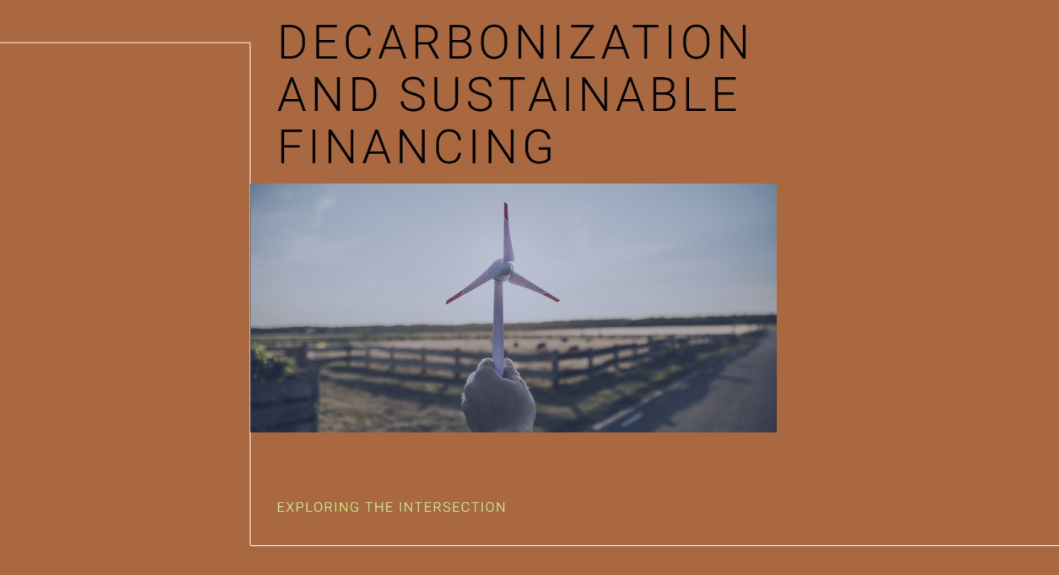
In the ever-evolving landscape of global commerce, sustainability has become a cornerstone for industries striving to balance growth with environmental responsibility. In this extensive exploration, we delve into the transformative potential of decarbonization platforms and sustainable financing in revolutionizing international freight management and logistics. From understanding the fundamentals to exploring real-world applications, we embark on a journey to comprehend how these innovations are reshaping the future of sustainable supply chains.
What are Decarbonization Platforms?
Decarbonization platforms represent a technological approach to reducing carbon emissions in various industries, including international freight and logistics. These platforms leverage data, analytics, and advanced technologies to optimize operations, enhance energy efficiency, and minimize the environmental impact of transportation.
Key Features across Decarbonization
Data-Driven Insights
Harnessing the power of data analytics to identify inefficiencies and areas for improvement in the supply chain. Real-time monitoring of carbon emissions to make informed decisions.
Optimizing Route Planning
Utilizing advanced algorithms to optimize shipping routes for reduced fuel consumption and lower emissions. Minimizing idle times and streamlining the transportation network.
Fleet Management Solutions
Implementing smart fleet management systems that prioritize energy-efficient vehicles and maintenance practices. Introducing predictive maintenance to reduce vehicle downtime and enhance overall efficiency.
Carbon Offset Integration
Facilitating the integration of carbon offset programs to neutralize emissions that cannot be eliminated. Supporting initiatives like tree planting or renewable energy projects to balance the carbon equation.
How does Sustainable Financing impact Decarbonization?
What is Sustainable Financing?
Sustainable financing involves the allocation of funds to projects and initiatives that prioritize environmental, social, and governance (ESG) criteria. In the context of decarbonisation in freight and logistics, sustainable financing plays a pivotal role in accelerating the transition to eco-friendly practices.
What are the Key Components of Sustainable Financing?
Green Bonds
Issuing bonds specifically earmarked for financing sustainable projects, including those focused on decarbonization. Attracting investors looking to align their portfolios with environmentally conscious initiatives.
ESG-Linked Loans
Offering loans with interest rates tied to specific ESG performance indicators. Providing financial incentives for companies to meet and exceed sustainability targets.
Government Incentives
Governments worldwide are increasingly offering incentives, grants, or subsidies for businesses adopting sustainable practices. Logistics companies can leverage these incentives to invest in decarbonization technologies.
Investor Pressure
Growing investor pressure on companies to disclose and improve their environmental impact. Encouraging businesses to seek sustainable financing for initiatives that contribute to decarbonization.
This Blog explores Maersk’s Carbon Pact initiative aimed at achieving net-zero emissions by 2050. This ambitious endeavor includes investments in energy-efficient vessels, the development of carbon-neutral fuels, and the implementation of decarbonization platforms for optimized routing and fleet management. Case Study 2: UPS’s Sustainable Financing Strategy
United Parcel Service (UPS) has embraced sustainable financing to support its transition to a low-carbon future. This includes green bonds to fund electric vehicles, renewable energy projects, and investments in alternative fuel infrastructure. The company’s commitment to sustainable financing aligns with its broader decarbonization goals.
Challenges in Decarbonization:
- Initial Investment Costs: Implementing decarbonization platforms and transitioning to sustainable practices often involves significant upfront costs. Companies need to balance these costs against long-term environmental and financial benefits.
- Global Regulatory Variability: Navigating the diverse regulatory landscape in different countries and regions poses challenges for international freight companies. Achieving consistency and alignment with global sustainability standards requires strategic planning.
The Future of Sustainable Financing: Driving Competitive Advantage and Collaboration
As companies embrace sustainable financing and decarbonization practices, they’re not just meeting regulatory standards—they’re gaining a competitive edge in today’s market. Consumers and businesses increasingly prefer partners with robust environmental credentials, which enhances brand reputation and attracts a growing eco-conscious customer base.
Furthermore, sustainable financing sparks innovation in green technologies and fosters collaboration across industries. By uniting businesses, investors, and governments, this collaborative effort accelerates the development and adoption of impactful decarbonization solutions. This collective approach not only drives technological advancements but also creates new business opportunities, positioning organizations at the forefront of a sustainable future.
